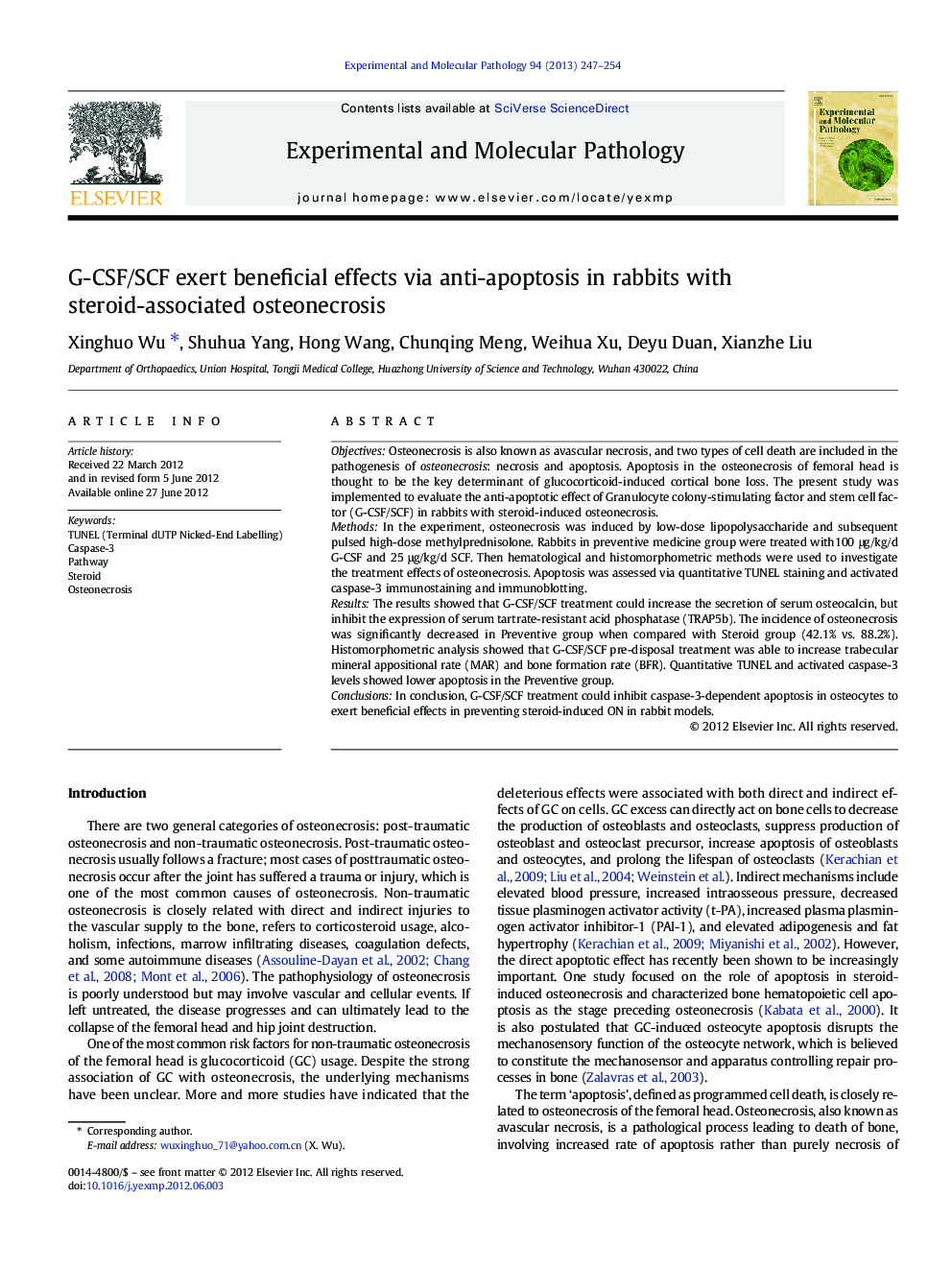| Article ID | Journal | Published Year | Pages | File Type |
|---|---|---|---|---|
| 5888288 | Experimental and Molecular Pathology | 2013 | 8 Pages |
ObjectivesOsteonecrosis is also known as avascular necrosis, and two types of cell death are included in the pathogenesis of osteonecrosis: necrosis and apoptosis. Apoptosis in the osteonecrosis of femoral head is thought to be the key determinant of glucocorticoid-induced cortical bone loss. The present study was implemented to evaluate the anti-apoptotic effect of Granulocyte colony-stimulating factor and stem cell factor (G-CSF/SCF) in rabbits with steroid-induced osteonecrosis.MethodsIn the experiment, osteonecrosis was induced by low-dose lipopolysaccharide and subsequent pulsed high-dose methylprednisolone. Rabbits in preventive medicine group were treated with100 μg/kg/d G-CSF and 25 μg/kg/d SCF. Then hematological and histomorphometric methods were used to investigate the treatment effects of osteonecrosis. Apoptosis was assessed via quantitative TUNEL staining and activated caspase-3 immunostaining and immunoblotting.ResultsThe results showed that G-CSF/SCF treatment could increase the secretion of serum osteocalcin, but inhibit the expression of serum tartrate-resistant acid phosphatase (TRAP5b). The incidence of osteonecrosis was significantly decreased in Preventive group when compared with Steroid group (42.1% vs. 88.2%). Histomorphometric analysis showed that G-CSF/SCF pre-disposal treatment was able to increase trabecular mineral appositional rate (MAR) and bone formation rate (BFR). Quantitative TUNEL and activated caspase-3 levels showed lower apoptosis in the Preventive group.ConclusionsIn conclusion, G-CSF/SCF treatment could inhibit caspase-3-dependent apoptosis in osteocytes to exert beneficial effects in preventing steroid-induced ON in rabbit models.
